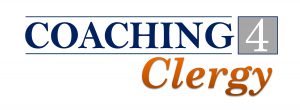
This is a habit I had to break, and I see it in others as well. I believed that every time you coach, there should be a huge breakthrough. If it doesn’t happen, you didn’t do your job.
When you’re addicted to the ahas, it’s no longer about your client; it’s about you.
I learned early on that the real coaching happens after the coaching, and so that’s where the ahas may happen. That’s when the person is really living, thinking through, and mulling over what we’ve talked about. So to expect it to happen within that 30-40-minute session every time really limits the impact of coaching and may set you up to fail.
An aha isn’t even a goal of every session and might not be what the client wants or needs.
Sometimes it’s, “Hmm, I never thought about that,” or, “Duh! How did I miss that?”
Sometimes the ahas are cumulative over a series of sessions and the time in between sessions.
A newer coach noted that every time she coached, the client cried. “Is that what coaching is?” she asked. Maybe, maybe not. But if they don’t cry, it doesn’t mean you didn’t do a good job.
As a coach, the aha feels fantastic when it happens. Similar to when a client says, “Oh, that’s a great question!” We can get addicted to that validation and concrete feedback.
So what does client satisfaction look like if we’re not getting the sparks and ahas? Well, for one, they keep coming back. We’re chipping away at something, slowly but surely. They’re having insights. They’re getting an opportunity to think out loud, which can be so rare.
How you will measure success is something the coach and client decide together in the coaching agreement. You can discuss that an aha is one possible outcome, but not the only possibility. It could be clarity, it could be small steps, it could be that they decide to go in a completely different direction. Or it could be a refusal to give up, even though an aha hasn’t happened.

 Talking to Fill the Space
Talking to Fill the Space